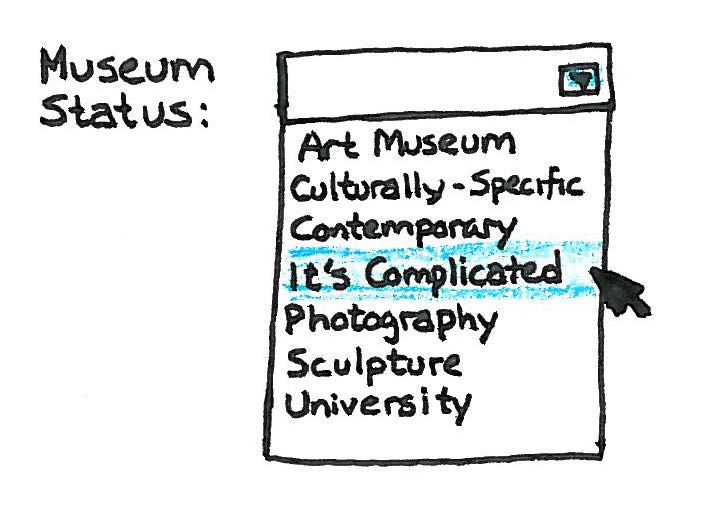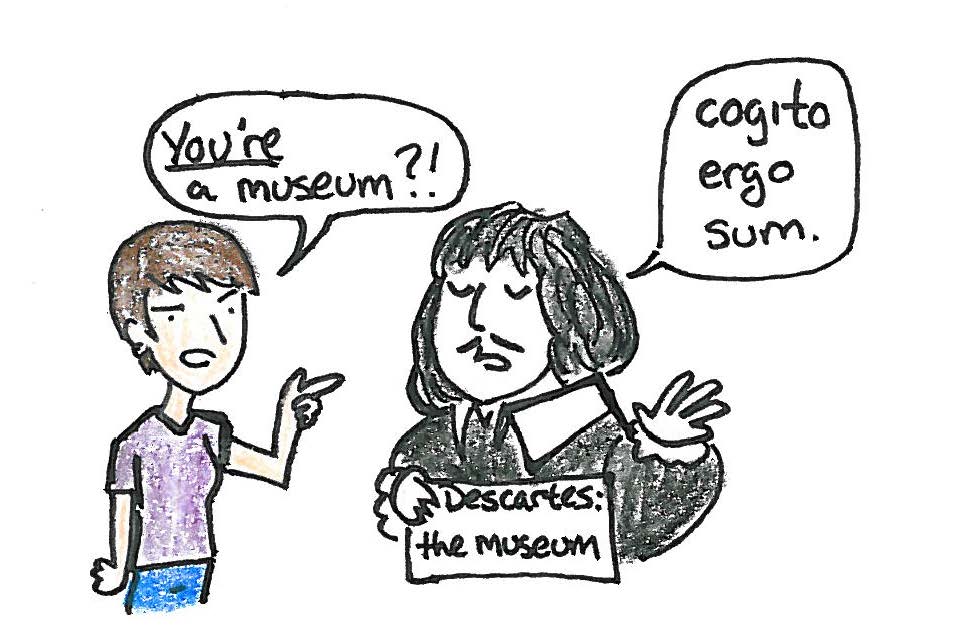
Someone recently asked me whether virtual museums count as museums. I answered that, since museums have never agreed on a shared definition of “museums,” we aren’t in a position to draw lines including or excluding our digital kin. It did make me revisit a post (below) in which I share my frustration at finding rational boundaries that define our field. (Inspired, I confess, by Jorge Luis Borges’ “Celestial Emporium of Benevolent Knowledge–a fictitious taxonomy of the animal kingdom, including categories such as “Those that belong to the emperor; embalmed ones; those that are trained.”)
Now that we are considering virtual museums I may expand the taxonomy to encompass:
- Museums that closed their physical site and remade themselves in the digital realm
- Museums that were born digital and seem to intend to remain so
- Museums that were born digital but eventually hope to build a bricks-and-mortar site
- Museums whose online visitors outnumber their onsite visitors by several orders of magnitude (hmm, soon that may encompass a majority of the field)
Anyway, take a look at my draft taxonomy, and see what you have to add to it.
This post first appeared on September 4, 2012
I’m about to break my own rule, and talk about nouns.
Specifically, names.
Hyper-specifically, AAM’s name. You may have heard the buzz over the last week, as people notice that our web page quietly announced “The Association is now the Alliance.” Bloggers and tweeters and listserve-posters pounced on our rechristening, speculating what it might mean. Tomorrow you’ll find out all about it, as AAM officially announces how the organization behind the name is changing to meet the future. For now, I’m just gonna ask:  What do all these organizations have in common? (Jump to end for the reveal)
What do all these organizations have in common? (Jump to end for the reveal)
Aquariums
- With charismatic marine megafauna (dolphins, seals, penguins, whales)
- Without charismatic marine megafauna
- Specific to their local ecosystem
- Featuring global collections
- With dolphin shows
- Without dolphin shows
Art Museums
- Featuring encyclopedic, global collections
- Featuring culturally-specific collections
- Featuring a single artist
- That focus on modern/contemporary art
- with permanent collection
- without permanent collections
- Focused on particular media (photography, film, sculpture)
- Focused on particular themes (wildlife, Western, religious, advertising, book illustration)
- Inside universities/colleges
- Inside larger art complexes
- Art museums inside historic houses
- Art museums with public gardens
- Sculpture parks (that may also be gardens)
- Formal and stuffy
- Not formal OR stuffy
- Museums in landmark “pillars of society” buildings
- Museums in new “starchitect” designed palaces
- Museums best navigated with a Segway, bag lunch and a ball of twine
- Museums that are little more than one room
Botanic Gardens
- Primarily decorative/display
- Research/conservation oriented
- Attached to an historic house
- Attached to an art museum
- Inside a cemetery
- Featuring public art
- Focused on particular taxonomic specialties (trees, cacti, roses)
- Historic (featuring heirloom plants, or recreating a particular time period)
- With children’s gardens
- Without children’s gardens
Children’s/Youth Museum
- Focused on toddlers and moms with infants
- Collecting
- Non-collecting
- Has a pretend supermarket
- With culturally-specific groceries
- Doesn’t have a pretend supermarket
- With/without a garden
General Museum
- Combination of a history & a natural history museum
- Combination of a history & and art museum
- Combination of art & natural history
- Combination of a history, art & natural history museum
- Little bit of everything
- With a mummy
- No mummy
Historic House/Site
- Interpreting an historic time period
- Interpreting a famous person
- Restored
- Unrestored
- With landscaped grounds
- With a working/demonstration farm
- Featuring immersive, first person interpretation
- Reproductions of sites/settlements/villages
- National Historic Landmarks
- Battlefields
- Archaeological digs
- Containing art
- Not containing art
History Museum/Historical Society
- Specific to a state
- Specific to a city
- Specific to a county
- Specific to a region
- Specific to a particular ethnic group
- Specific to a particular event
- Specific to a war
- Specific to an assassination
- Specific to an act of terror
- Specific to a piece of legislation or declaration
- Specific to a particular industry (textiles, steel, ship building, soft drink manufacturing)
- Military museums (those that don’t classify themselves as “specialized museums”)
- With an archive/library
- Without an archive/library
- With an archive but not a library
- With a library but not an archive
- Featuring some Big Things like trains, planes, automobiles, submarines, machine tools (but not exclusively, because then they tend to classify themselves as “specialized”)
Natural History/Anthropology
- Supporting research collections
- Not supporting research collections
- Focused on dead, non-human animals, & plants
- Focused on dead people & the artifacts they made
- With dinosaurs
- Real specimens
- Casts and reproductions only
- Without dinosaur
- With fossils of things without backbones
- Those with live animals and plants on exhibit
- Those without live animals and plants on exhibit
- Housing fluid collections in explosion-proof, specially vented storage rooms
- Not having fluid collections (and therefore not needing explosion-proof, specially vented storage rooms)
- Associated with a university
- Or not
- Science-based
- Creationism-based

Nature Centers
- Associated with a national park
- Associated with a state park
- Associated with a city park
- Just sitting out there by themselves
- With living collections
- Or not
- Or non-living collections
- Or not
Science Technology Center/Museums
- With permanent collections
- Without permanent collections
- With research collections
- Without research collections
- With a giant Tesla coil
- Without a giant Tesla coil
- Featuring a Maker Lab
- Not featuring a Maker Lab
- With a Large Format Theatre
- Without an LFT
- Institutions with planetariums
- Institutions without planetariums
- Institutions that ARE planetariums
Specialized Museums
- Culturally specific museums
- Museums about Native Americans
- Run by Native Americans
- Not run by Native Americans
- Museums about planes
- Museums about trains
- With working trains
- Without working trains
- Museums about automobiles
- Or motorcycles
- Museums about ships (aka “large rotting objects”)
- Military museums (those that don’t classify themselves as history museums)
- Culturally specific museums (that don’t consider themselves to be history museums)
- Textile museums
- Except when they specifically identify as quilt museums
- Halls of Fame
- Sports museums (which often contain halls of fame)
- Music museums (which also often contain halls of fame)
- Toy museums
- Museums of specific products (paperweights, mustard, shoes, typewriters, barbed wire, umbrella covers)
Zoos
- With classic terrestrial charismatic megafauna (elephants, lions, tigers)
- Without classic terrestrial charismatic megafauna
- With botanic gardens integrated into their grounds
- Without botanic gardens integrated into their grounds
- With petting zoos
- Without petting zoos
- With Greater Pandas
- With only Lesser Pandas
- No pandas
 OK, yes, I’m poking gentle fun at the infinite distinctions we museumers draw between ourselves. (With many thanks to my far-flung colleagues who contributed to the taxonomy of their own segment of the museum field. To misquote Homer Simpson—“it’s only funny when it’s true.”)
OK, yes, I’m poking gentle fun at the infinite distinctions we museumers draw between ourselves. (With many thanks to my far-flung colleagues who contributed to the taxonomy of their own segment of the museum field. To misquote Homer Simpson—“it’s only funny when it’s true.”)
But it is a serious topic. When we get together to talk business, breakout sessions are fine—big art museum directors in one room, small museum administrators in another, college and university museums up the hall. However, we also need to come together in a plenary session, the big AND small museums, art AND zoos, history AND science, to identify what we have in common, pool our collective wisdom and influence, and become a force big enough to shape the world.
To become, in fact, an alliance: to be allies in a common cause. And to rally, not just museum staff and independent professionals and people who make stuff for museums and provide services to museums, but everyone who cares about museums and the work we do.
So, is this just a name change for AAM? No, it’s a reflection of a far deeper and far reaching metamorphosis of what we hope to achieve and how we plan to accomplish it. But for more on that, you are going to have to wait for tomorrow.
Meanwhile, happy tweeting.
As a biologist, I know that all taxonomies are incomplete. The nucleus of the classification scheme above was the framework we used to use for the old Museum Financial Information survey and other AAM data collection, which is being superseded by a new set of categories created by IMLS in collaboration with the field. As to the humorous subdivisions, please use the comment section below to share how you see your subsection of the field.









You really need to get on a radio or talk show because your musings are delightful but poignant. Personally, museums need to learn how to brand their mission the way sports teams brand their players today. This is not a new trick. Museums were started by philanthropy — people who were absolutely passionate about sharing their collection house and valued the importance of branding.